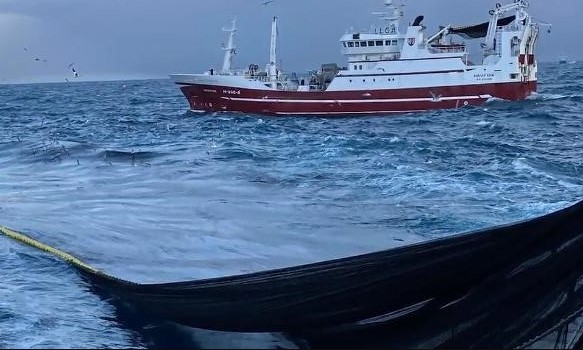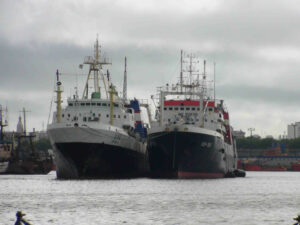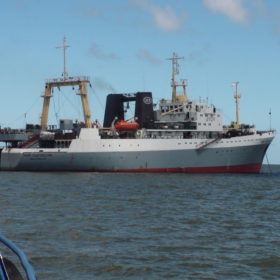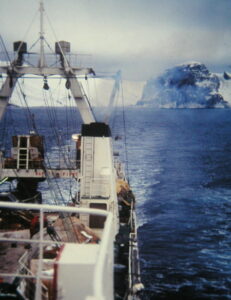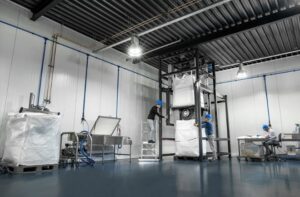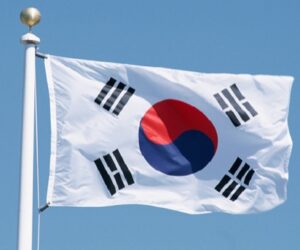Since end 80s, Tharos has been studying South Antarctic krill capabilities (Euphausia superba, Dana) to become a high-quality source of lipids and other very special food-grade nutritional compounds.
Since then, Tharos has performed valuable at-sea and on-shore research. It has partnered with respectable word-class research institutions studying krill performance under different processing conditions. Several papers and research activities have followed.
Tharos research background extended to other related fields such as the krill protein/lipid complex and its uniqueness for human consumption.
Some key conclusions;
- Krill’s lipid content has a seasonal variation.
- There are two “schools” of thoughts on raw South Antarctic krill lipid content; Russian, Ukrainian and Japanese on one side (Germans also), Norwegians on the other.
- Russian, Ukrainian and Japanese sustain that there is a lipid variation throughout the season. On the opposite, the “Norwegian school” (at least part of it) claims that the lipid content remains stable (and rather high) throughout the season.
- Based on above, Norwegian krill operations have (partly) used such thesis to design their business plans. Business models sustained on a “stable-lipid-content” approach faced a wide oil extraction processing-cost-variation, in a magnitude of 50%.
- Fat variation is also related to biomass variation, which moves hand by hand with larger captures concentrated within high-fat content months (@ 70/90% capture @ March ~ July).
- At feeding stage, krill’s lipid content is lower.
- Lipid content prior spawning (September/October ~ December) and after spawning (March ~ April) are different, higher for the latter.
- South Antarctic krill key spawning and nursery areas are located in the Western Antarctic Peninsula.
- Main spawning season ranges from January to March.
- Tharos latest report show the relationship between individual classes of krill lipids and the main fatty acid composition of lipids.
- Major classes of lipids are krill phospholipids and triglycerides; 13 ~ 33% and 32 ~ 60%, respectively, and relatively high levels of sterols (13%) and their esters (12%).
- There are differences in fatty acid composition, degree of saturation, nutritional value and possible resistance to oxidative changes of lipids during the storage of krill in frozen condition. The resulting products out of such frozen presentation are affected, which is also dependant on the initial lipid content of krill and the areas of its habitat.
- For krill inhabiting the island of South Georgia & the Indian sector of the Antarctic, there is a clear trend of a decreasing content of phospholipids and an increasing quantity of triglycerides.
- In the first case (Georgia’s), the change in lipid content range from 1.3% up to 9.9% of PL content, while increasing the amount of TG’s from 32 ~ 37% to 60%. For the 9.9% value (see Figure I, table 27 bellow) it is not clear when precisely of the season samples where taken.
- In the second case (Indian sector), with an increased level of total lipids from 1.4 to 6.8%, phospholipids content decreased from 33% to 20% while increasing the amount of triglycerides from 32 to 53%.
- On all other sectors (where most part of krill fishing takes place) lipid content range on its normal content of 3 ~ 5%.
- There is a minimum content of sterols (about 4% each) found in the lipids of krill at South Shetland Islands. The highest (about 11-13%) in lipids was in South Orkney.
- Nobakasu Shibata’s (1982) report confirms that South Antarctic krill lipid content increases from Spring/Summer (early fishing season) onwards. PL relative content faces the opposite condition, decreasing as the season progresses while TG increases.
- Among other research, accompanying supporting data includes work done by Nobakasu Shibata’s (1982), Andrew Clarke (1980), Wilhelm Hagen (1996) and Tharos’ latest at-sea work.
- Wilhelm Hagen et al. (1996) recorded seasonal lipids dynamics; during spring there is the minimum lipid content, intermediate lipid content during summer and the maximum lipids content are accumulated in autumn (mainly April-May).
- Tharos’ thesis is that raw krill lipid content variability can be better dealt by Tharos oil extraction process. It will succeed not only because of end-quality but also been able to process in a more continuous way throughout the season.
- Reported data includes krill enzymes proteolysis activity combined with frozen raw krill performance when stored on frozen condition and the subsequent loss of key compounds, confirms that the Tharos at-sea process will yield Tharos’ expected results which is lipids concentration, in terms of content and quality.

